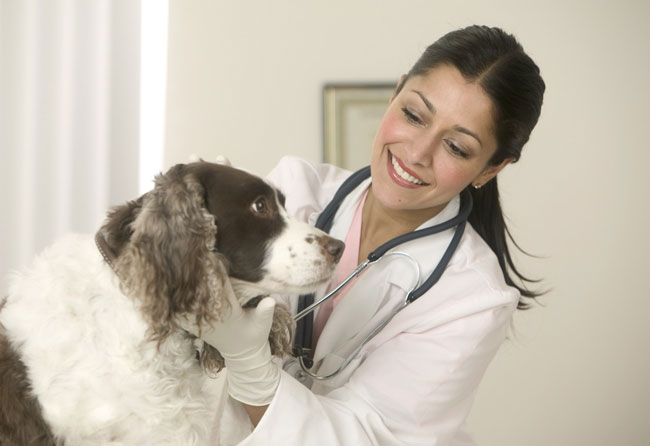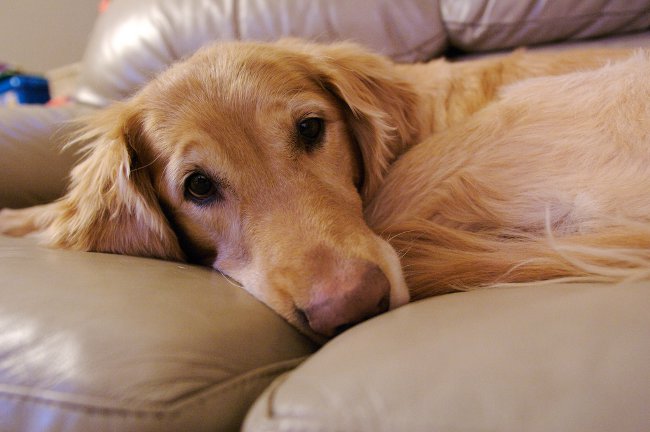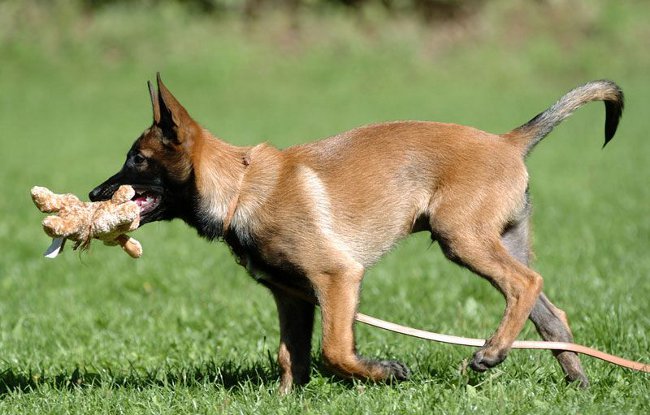Epilepsy in dogs

Epilepsy is one of the most common neurological diseases. She is sick not only people, but also some animals. For example, epilepsy in dogs - not such a rare phenomenon. The Country of Soviets will tell about the causes, symptoms and treatment of epilepsy in dogs.
Epilepsy affects all breeds of dogs, but In some dog breeds, the risk of epilepsy is higher than that of the rest. These include, for example, dachshunds, boxers,Cocker Spaniels, St. Bernards, Labradors Retrievers, Golden Retrievers, Hounds, Irish Setters, Belgian and German Shepherds and some other breeds of dogs. Predisposition to epilepsy is genetically determined, but the exact mechanism of its inheritance is unknown.
Often epilepsy is confused by cramps in dogs,associated with certain diseases (infections, tumors, poisonings, etc.). Such convulsions are called secondary epilepsy, but in fact they are not epilepsy and pass if the underlying disease is cured. Primary (true) epilepsy in dogs is not treated, you can only cope with her symptoms (epileptic seizures).
Usually the first epileptic fit occurs in a dog aged from six months to five years. The degree of his seriousness can be different - fromsmall twitching to severe seizures. There are some factors that increase the likelihood of epileptic seizures. For example, in bitches epileptic seizures can worsen at heat, true or false pregnancy.
Epileptic attack consists of three stages. The first is called "aura". The dog becomes restless, starts whining, tries to escape, to hide, there is also increased salivation.
The second stage - the ictal (actually seizure) - is accompanied by cramps. During convulsions can be observedinvoluntary excretion and urination (due to the tension of the abdominal muscles), the dog can bite the tongue, cheek, as a result of which bloody foamy saliva will be swept up. Fits are often accompanied by screeching, whining, etc.
The third stage is postictal. For some time after the attack,continue salivation, the dog will be disoriented. Some dogs after the epileptic seizures are depressed and inactive, some - on the contrary, are nervous and restless.
Despite the fact that the epileptic seizure in the dog may look pretty scary, it usually does not threaten the life of the animal. How to help the dog during a fit? The common mistake of the owners is to try to unscrewthe dog's jaw. Contrary to popular misconception, the dog is unlikely to suffocate during a seizure. But, trying to release the jaws by force, you can injure the dog or get injured themselves.
All that is required of you is to stay close topet and gently support his head or at least put under it a soft litter so that during convulsions your dog does not hit his head and does not receive an additional injury. If the attack is very severe or convulsions do not stop more than half an hour, you need to urgently drive the dog to the vet. Independently to try to do a dog injection of anticonvulsants is highly not recommended.
As we have already said, epilepsy in dogs is not treated, you can only cope with the symptoms. For the treatment of epileptic seizures, anticonvulsants are used, which are prescribed by a veterinarian. Only a veterinarian can correctly choose the drug and its individual dosage depending on the breed, sex, age of the dog and its other characteristics.
The use of anticonvulsants treatment of epilepsy is not limited. In epilepsy, dogs are shown a special diet, in which the amount of meat is limited. In addition, patients with epilepsy should not carry animals, attend training venues, etc.: significant physical activity is stress, and stress can provoke an epileptic seizure.
Epilepsy in dogs is a serious disease, but not as terrible as it might seem at first glance. If you diagnose epilepsy and start treatment in time, the life of a patient with epilepsy of a dog will not practically differ from the life of her healthy brethren in appearance.














